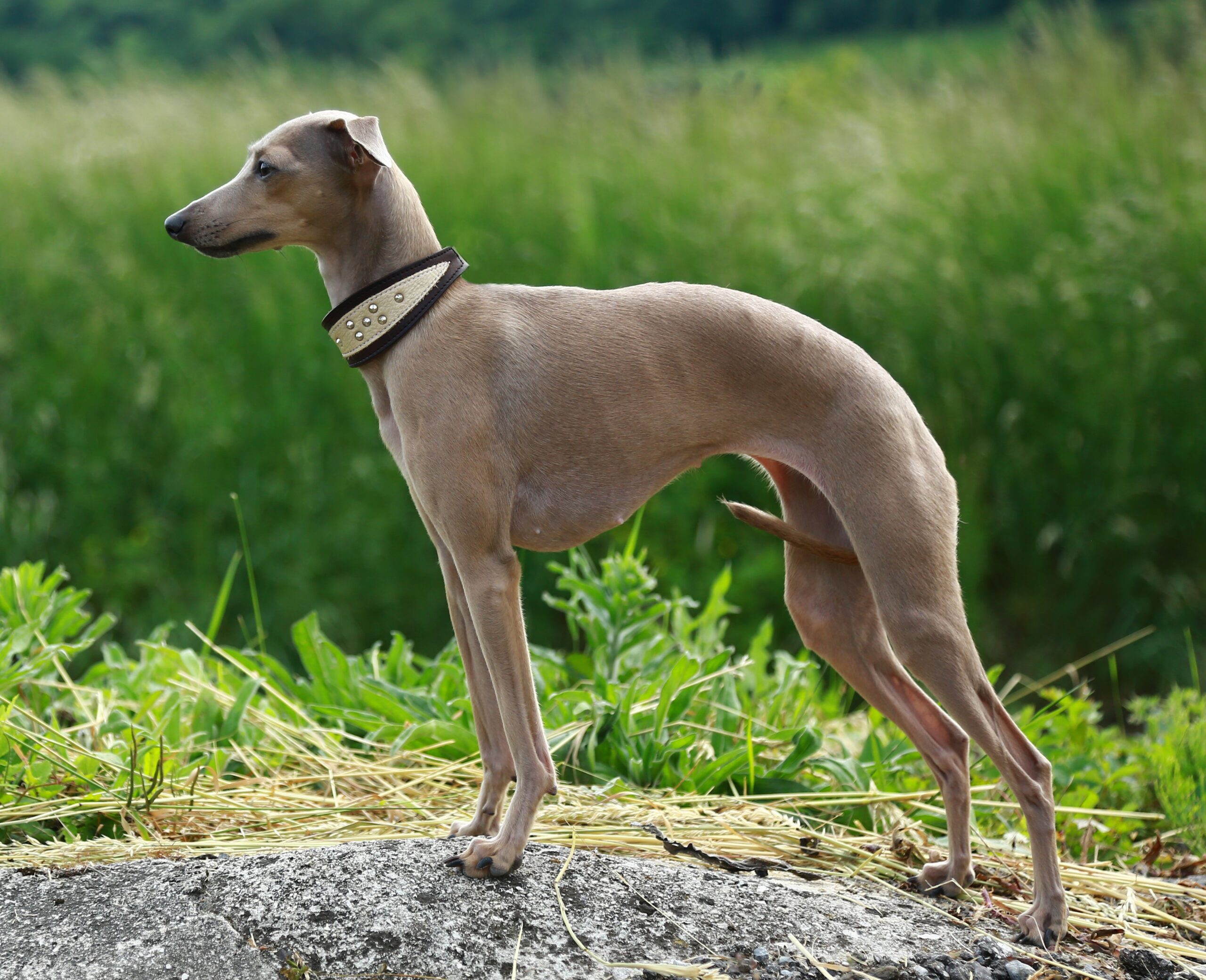The Italian Greyhound is a miniature Greyhound with an ancient heritage dating back over 4000 years.
This miniaturised sighthound is wonderfully dainty and the epitome of grace and elegance. Standing at 13 to 15 inches tall to the withers, the Italian Greyhound has a slim, muscular body with a curved back, a deep chest curving into a tucked waist, slender fine-boned legs and an exquisite high stepping gait. Their heads are narrow and aerodynamic and their coat is short and glossy and comes in a variety of colours, with grey and blue being the most common. Italian Greyhounds are gentle and affectionate dogs who thrive on human company. They form strong bonds with their owners and do well in family homes, although due to their fragility, they should be protected from boisterous dogs and overly exuberant children. Some Italian Greyhounds can be aloof with strangers and early socialisation is recommended to prevent them from becoming too shy or timid. This is a breed that loves finding a warm place to curl up, preferring your lap to the cold floor. Despite their miniature size and fragile appearance Italian Greyhounds still require around an hour of exercise per day and can be extremely fast and agile if they catch sight of potential prey, so exercising in a safe, confined area is recommended. As this breed has virtually no body fat, soft, warm resting places should be provided, as well as protection from the cold.
History

Italian Greyhounds are a truly ancient breed which can be traced back to the time of Ancient Egypt, with drawings of small greyhounds depicted on the walls of the tombs of Pharaohs. By the Middle Ages, these miniature greyhounds could be found in southern Europe, and over the years, their popularity grew, with the breed prized for its elegance and sweet nature. By the 16th Century, the breed was hugely popular amongst European royalty and particularly amongst the Italians, from where it derived its name, and they appeared in many paintings of aristocratic families.






